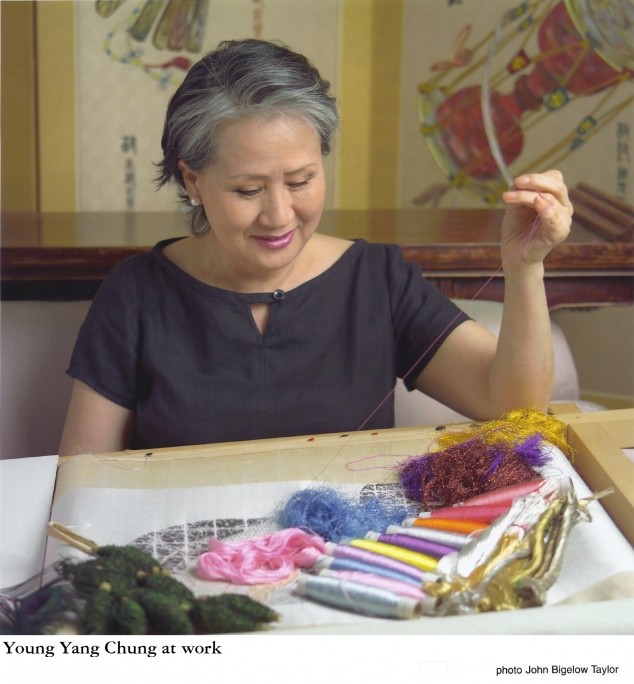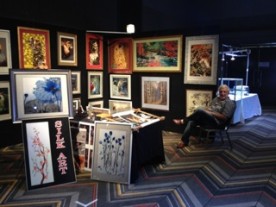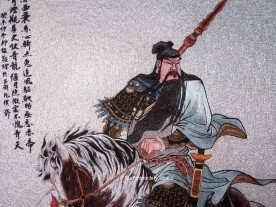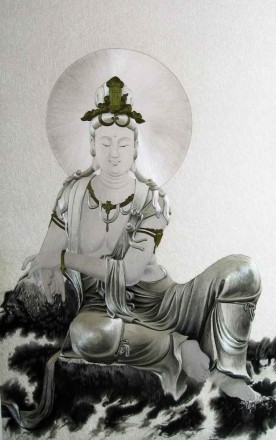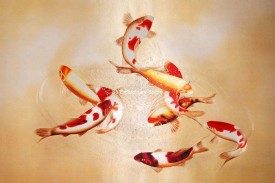Young Yang Chung, a Korean embroiderer, radiates boundless enthusiasm for her craft. Beyond her remarkable embroidery creations, Chung is on a mission to kindle interest and appreciation for embroidery and textile arts. Her efforts span a wide array of projects, including contributions to the Chung Young Yang Embroidery Museum at Sookmyung Women's University in Seoul, the curatorship of a Korean embroidery exhibition at the Asia Society Museum in New York, and the authorship of books that delve into the intricacies of embroidery. Her passion is not only infectious but transformative, as it challenges the traditional view of textiles as mere crafts.
Chung embarked on her journey in the world of embroidery at the tender age of fourteen. She fondly refers to her work as "paintings with a needle." Her ardor for Korean embroidery and its Chinese roots has captivated enthusiasts and experts alike, even those who had previously overlooked decorative arts. Her embroideries, both traditional and contemporary, defy the conventions that relegated textiles to the realm of craft rather than fine art.
Historically, Chinese and Korean experts often focused on painting, dismissing textile artsas utilitarian and lacking intellectual and aesthetic depth. A saying in China, "men farmed and women wove," underscored the perception that textiles were functional, the domain of women's labor, not art. Despite their intricate designs and vibrant colors, textiles were viewed as devoid of the intellectual and spiritual depth found in painting and sculpture.
Buy Chinese Silk Embroidery Online
Chung's life and career provide compelling evidence of the enduring aesthetic allure of embroidery. Born and raised in Seoul, her initial lessons in embroidery came from a Russian-Korean teacher. However, the Korean War forced her family to relocate to Stone Village in Chungchong Province, where she honed her skills. There, she taught older rural women the art of embroidery. In the countryside, girls were expected to perform every aspect of textile production, from spinning to weaving and stitching, for their dowries. Chung's journey led her to learn not only the "French" embroidery techniques she had acquired in the city but also the intricacies of cotton picking, cocoon cultivation, silk dyeing, and weaving from the rural women. Despite the hardships during the war, Chung cherishes the invaluable skills she acquired in the countryside.
Upon returning to Seoul after three years, Chung continued her embroidery education and started teaching the craft. Her expertise and artistic flair soon gained recognition. In 1965, she established the International Embroidery Institute, a testament to her commitment to empowering young women with a vocation. In 1967, she founded the Women's Center at the request of the Korean government to teach embroidery to unemployed young women from rural areas. Despite challenging economic circumstances, Chung's efforts bore fruit, with her students' hand-embroidered handkerchiefs finding a market in Tokyo department stores. Embroidery orders poured in from Japan, Egypt, the United States, and beyond, sustaining Chung and her students.
In the 1970s, Chung moved to the United States to expand her knowledge of East Asian embroidery traditions and promote embroidery as an art form. She earned a Ph.D. at New York University, focusing on the history and techniques of Chinese, Korean, and Japanese embroidery. Concurrently, she dedicated herself to studying Western and Eastern embroideries at the Metropolitan Museum of Art. Armed with a profound understanding of East Asian embroidery's history and her own creations, she embarked on a mission to elevate embroidery from its status as "women's work" to a respected art form. Chung tirelessly spread awareness through lectures, demonstrations, writings, teaching, workshops, and exhibitions of her work. Her journey took her from Australia to Europe, advocating for the art of embroidery and showcasing its techniques and motifs.
Chung's embroidered masterpieces are a testament to her advocacy. Her works have earned recognition worldwide. Even before she embarked on her academic career, they found their way into esteemed collections, including the Korean president's residence, the shah of Iran's palace, and the premier of Malaysia's palace. Museums like the Metropolitan Museum of Art and the Smithsonian Institution have added her embroideries to their collections.
Her embroideries are often large-scale screens that require months of meticulous work. Inspired by history, one of her screens features different types of currency used in East Asian history, each coin intricately detailed using diagonal satin stitches. Another screen portrays Chinese, Japanese, and Korean musical instruments, with a focus on Confucian rituals, and features stylized Chinese characters.
Custom Portrait Embroidery from Photo
Chung's signature embroideries frequently depict plants and animals, deeply rooted in Chinese and Korean cultures. Her works resonate with symbolism, affirming that "the ornamental vocabulary and color schemes used by East Asian artists are replete with symbolism." A screen of white cranes, symbolizing longevity, showcases her artistry in capturing their lifelike colors. A Rose of Sharon, Korea's national flower, is shaped in the form of the Korean peninsula, symbolizing her connection to her birthplace. A dazzling screen of silvery fish and goldfish represents abundance, prosperity, and the hope for the reunification of North and South Korea.
Chung's profound connection to and love for embroidery, an art form often overlooked, shines through her breathtaking creations. Her journey, from the humble beginnings of "small needles and homespun silk threads," has become a powerful, life-changing odyssey.
by Su Embroidery Studio (SES), Suzhou China
SES is dedicated to Chinese Silk Embroidery Art and High-End Custom Embroidery
Find SES's embroidery work at Chinese Silk Embroidery for Sale.


